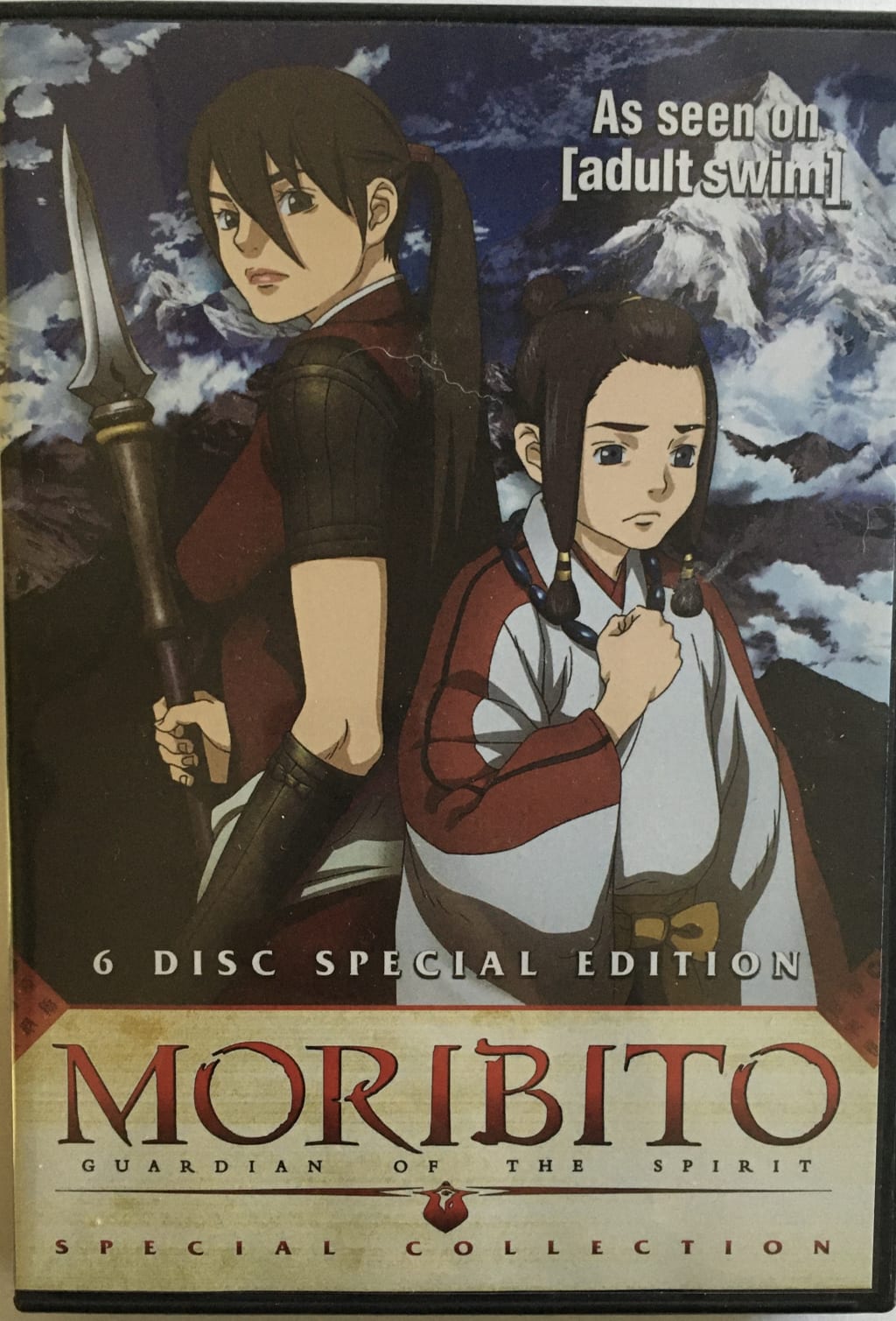Seirei no Moribito: Guardian of the Spirit
Review of a 2007 Anime Classic

Seirei no Moribito, an animated television series first aired in April of 2007, is at the top of my list of great anime features of all time. It is not only visually breathtaking. The original music score is superb, and the story has all the elements that combine to make it a fantastic fantasy fairytale quasi-historical drama.
The series is based on the first in a book series written by Nahoko Uehashi. The storyline of Moribito interweaves complex characters from three fantasy nations, highlighting the reaction of each character within culture and upbringing to the collision of the unseen world forces with the visible world.
The animated TV series was written and directed by Kenji Kamiyama, also known for his work on Ghost in the Shell and Eden of the East. Before directing anime productions, Mr. Kamiyama was recognized for his work on the backgrounds for Akira directed by Katsuhiro Otomo and the Hayao Miyazaki film Kiki’s Delivery Service.
In the opening scene of Moribito, Balsa, a 30-year-old woman spear wielder and bodyguard for hire originally from Kanbal, a Tibet-like mountain nation, dramatically rescues Chagum, the second prince of Shin Yogo from drowning. The prince’s mother subsequently summons Balsa and asks her to protect Chagum from political intrigue involving his father, the Mikado.
Forced to flee, Balsa and Chagum find relative safety from danger with a young street couple Toya and Saya. They live a hand-to-mouth existence on a tented raft dwelling under the entry bridge to a large city. Balsa becomes aware that Chagum is housing a spirit that seems to be protecting him and harming him simultaneously.
As they leave the city to consult with Torogai, a wise woman from Yogo, and her herbalist protégée Tanda who Balsa has grown up with; Balsa and Chagum are set upon by assassins, and Balsa receives serious wounds. She sends Chagum forward alone on a dangerous journey for Tanda’s help.
During these events, we begin to understand the reasons compelling the Emperor (the Mikado) to seek his son’s death. The Emperor's court advisors believe Chagum is carrying a dangerous water spirit that will bring about the end of the world. The lore surrounding the founding of their kingdom demands the slaying of this spirit by the ruler to save humanity.
The primary literary themes of the series revolve around loyalty and integrity, friendship and trust, and the search for truth over blind acceptance of tradition. Balsa, her friends, and Chagum’s former tutor and star reader Shuga, all work separately and together to determine the nature of what has possessed Chagum. They strive to find a cure for Chagum and attempt to assure his safety from human and otherworldly assailants. Environmental issues, national and oral histories, and personal prejudices all factor into their reach for understanding.
In addition to the well-written and cohesive story, the musical score boosts the value of the production. It captures both the main elements of the story and the pre-industrial revolution setting. In addition, it lends credence to each character and nation portrayed. The contemporary rock music opening and closing themes of the series creates bookends for the orchestral and choral score by Kenji Kawai with its elements of folk tradition and references the historical nature of the story.
The opening song “Shine”, by Japanese rock group L’Arc-en-Ciel, states the series theme directly. The lyric “I will defend you from all the darkness/ this is the truth from my heart” (Line 3-4) sounds like a pledge from Balsa to Chagum. Former lead singer Hyde (lyrics) and band member Tetsuya (music) wrote the song, leaning toward the sound of the band U2, with lyrics combining Japanese and English. (Unfortunately, when Hyde left the band, the official music videos in which he featured were removed by the record label from sites such as YouTube. These were also performance artworks. Hyde’s dramatic costuming that perhaps owed a nod to Keith Richards and Johnny Depp was about ten years ahead of its time.)
I view the closing theme song “Itoshii Hito e” (To the One I Love) by Sachi Tainaka as a familial statement of love from the prince Chagum toward Balsa. I find it interesting that a male singer represents the feelings of Balsa in the opening theme and that a female singer represents the feelings of Chagum in the closing theme song. The contrast helps to complete the story poignantly.
The internal score for the series was composed by Kenji Kawai. The soundtrack features the children’s choral work "Nahji no Uta" (Nahji Song) which has the feeling of an ancient folk tune. "Nahji no Uta" has an instrumental counterpart titled "Omoi Haruka" and the soundtrack also includes an impressive instrumental array of other themes. Personal favorites include “Shigure no Koro”, “Tamikusa no Sasoi” and “Daichiyo”. These three instrumental pieces along with others in the collection become backgrounds for scenes portraying action-packed sword and spear combat, the Mikado’s court, the stargazers’ observatory and library, and the appearance of creatures from the unseen world Nayugu depicted toward the end of the series.
Much of the animation detail of the series is comprised of richly detailed background scenery. The somewhat stilted motion of the characters and the portrayal of individuals neither beautiful nor ugly in a typically comic way, as so many anime characters are, takes some getting used to. Over several episodes, the careful character development helped me to look past the superficial and into the hearts and minds of each person in the story. Each location in the film, from rich palace scenes to Tanda’s earthen home with an internal fire pit, Toya and Saya’s curtain-covered raft in the river, and a temporary home for Balsa and Chagum in an ancient rice production mill have been carefully detailed and thought out as well.
The series is occasionally available on internet streaming sites such as Netflix, Hulu, and Crunchyroll, but as an older anime seems to be fading from awareness. There are some DVD collections available, but these are also disappearing as technology changes.
In some ways, it is a shame that Moribito was produced as a TV series rather than a film due to the prejudices against television story quality offered by film lovers. In my opinion, Seirei no Moribito richly deserves a position of honor in the list of great animated productions of all time.
Animation Cover Pictured:
Moribito Guardian of the Spirit Special Collection,Kamiyama, Kenji Writer and Director, Based on the novel by Uehashi, Nahoko, Anime Works AWDVD 0888, 2008 DVD Set
Music:
L'Arc-en-Ciel "Shine", Lyrics and vocals by Hyde, Music by Tetsu, Nexus 4/Shine Ki/oon, Single release date: August 27, 2008 CD
Kawai, Kenji Seirei no Moribito, Vol. 1 Seirei No Moribito Ongaku Hen (various artists) Pioneer May 12, 2007 CD
Kawai, Kenji Seirei no Moribito, Vol. 2 Japanimation (artist) Geneon August 14, 2007 CD
Tainaka, Sachi "Itoshii Hito e" Sistus Records Single release date June 6, 2007 CD
Japanese Lyrics and English Translation of "Itoshii Hito e" (To the One I Love) http://www.animelyrics.com/anime/seireimoribito/itoshiihitoe.htmAccess date: September 12, 2021

About the Creator
Natalie Wilkinson
Writing. Woven and Printed Textile Design. Architectural Drafting. Learning Japanese. Gardening. Not necessarily in that order.
IG: @maisonette _textiles






Comments
There are no comments for this story
Be the first to respond and start the conversation.